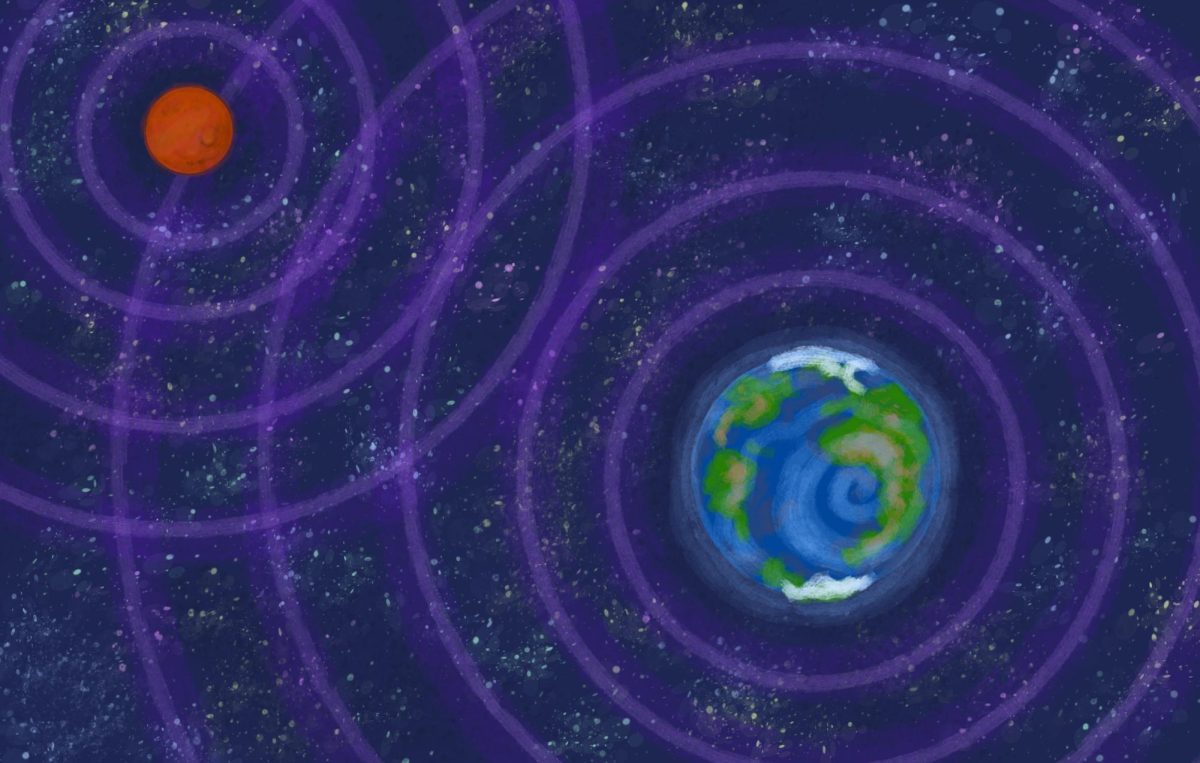As part of a team of scientists, UT researchers found evidence for gravitational waves that shape the universe. The results were the culmination of 15 years of research.
“We basically are in a bath of gravitational waves all around us,” researcher and physics graduate student Jonathan Nay said. “We suspected that they would be there, but this is the first time we actually have compelling evidence that they do exist.”
Published on June 29 by the North American Nanohertz Observatory for Gravitational Waves, the data differs from evidence found in 2015 because the recently discovered waves have much lower frequencies.
“The gravitational waves that we now have compelling evidence for are from much, much larger galactic scale events that happen all around us,” Nay said.
Nay said the waves’ existence was predicted by Einstein’s theory of relativity, which says gravitational waves can spread through space and time and warp these properties as they pass through them.
“It requires very large massive objects to form these ripples, but once they’re there, they propagate out just like ocean waves propagate through the ocean,” Nay said. “It’s pretty fascinating to think that right now, everything around us has these ripples passing through it. You can’t perceive them because they’re so small, but they’re there.”
Researchers are currently unable to determine the source of the gravitational waves, researcher Kimberly Boddy said. The leading theory is that gravitational waves originate from pairs of supermassive black holes, although they may also stem from processes dating back to the beginning of the universe.
“There are other possibilities, such as exotic physics, that could happen from the era of the Big Bang,” assistant physics professor Boddy said. “It could be a mixture of the two. It could be the supermassive black holes. We don’t know for sure right now.”
Now that the researchers have found proof of these waves, Nay said they can work towards a better understanding of various astrophysical processes like galaxy formation. The waves might also help scientists look deeper into the past — even before the Big Bang.
Boddy said current telescopes cannot see past the cosmic microwave background, which is radiation released directly after the Big Bang.
“The farthest back we’re able to currently see is about 380,000 years after the Big Bang,” Boddy said. “If we had a detection of cosmological gravitational wave background, we could see much further into the universe’s history.”
By being able to look past this radiation, Nay said scientists now have a window into the early universe that will only grow clearer as data becomes more refined.
“The best analogy I’ve heard is we’re just now hearing the cosmic symphony of gravitational waves,” Nay said. “It’s like we’re playing music, but its volume is very, very low … as the volume gets turned up, as time goes on and we get more data, we’ll be able to start making out the individual instruments in the symphony.”















